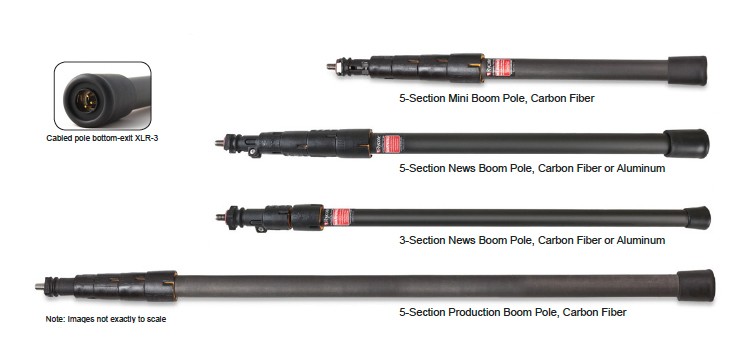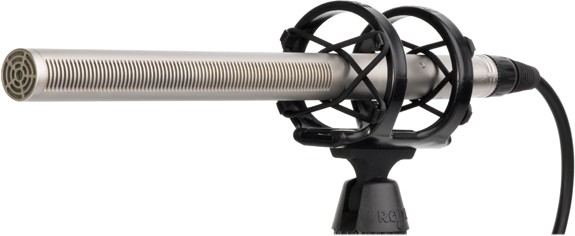Everything you need to know about Video Production.
The Sound Department.
 We’re starting a series of articles about Video and Film Production crew. Whether you want to be in the industry, or just want to learn more about filmmaking, we will provide you with all the information you need right here. Today we are talking about The Sound Department, with focus on Boom Operating!
We’re starting a series of articles about Video and Film Production crew. Whether you want to be in the industry, or just want to learn more about filmmaking, we will provide you with all the information you need right here. Today we are talking about The Sound Department, with focus on Boom Operating!
Who comprises The Sound Department?
The Production Sound Crew are in charge of recording all sound on set or on location. It includes, Production Sound Mixers, Boom Operators and Sound Assistants. Although film is primarily a visual medium, sound is incredibly important in storytelling and portraying emotion resonance of a film through dialogue.
Sound is an incredibly challenging job to do on set because most film sets are full of noise, you cannot predict or control outside noise or frequencies. The desired camera position or camera shot also becomes an issue for The Sound Department as positioning compromises where the microphones can be placed.
It is usually easier to re-record dialogue about shooting, this is called, (post-syncing), but most Actors and Directors prefer to capture the real sound heard on set. Production Sound Mixers are usually positioned off set and record the sound captured through the microphones, DAT (Digital Audio Tape) or onto hard disk records.
Boom Operating consists of a person who is responsible for positioning the microphones to get the best possible sound and ensuring the boom is not in shot. Sometimes, one person can be both Sound Mixer and Boom Operating by carrying a portable sound mixer, while holding and operating the microphone, but this is a tough job! On bigger sets, you can have Sound Assistants that help out The Sound Department. They check that all equipment and batteries are working and even swing a second or third boom, if needed.
Sound Mixing and Boom Operating.
Production Sound Mixers need to ensure that dialogue and sound effects are recorded during filming, they need to make sure it’s suitably clear. They serve as a Sound Recordist during filming, responsible for recording and balancing audio effects. The Sound Mixers job starts in preproduction.
Once hired for a specific Video Production, they: Choose what audio equipment to use for that project, as well as provide that equipment, visit the filming locations ahead of time and evaluate how the sound is going to work in that location in case it could be problematic, such as excessive background noise or weather conditions, hire or assemble their team, if they need Boom Operators (if they won’t be doing the job) or Sound Assistants.Boom operating employs the technique of holding a microphone above a subject to allow for versatility of movement of the talent and ensuring it doesn’t get into the camera shot while retaining brilliant audio quality, sounds easy right?
Together, the Sound mixer and Boom Operator will select the most suitable types of microphones, considering the coverage of each take, (e.g. close-ups or extreme angled shots may require clip microphones that do not appear in frame), and carefully reposition these microphones for each set-up, to ensure adequate sound coverage.
During production, they will record sound and actors’s dialogue in every take, record atmosphere (without dialogue) or ‘wild tracks’ on set or location to assist the Post Production Sound Department during the editing process to use in the film/video or as reference.
Equipment:
Boom Pole
Allows The Boom Operator to place the microphone above the subject/talent, while staying out of the camera frame. It is usually made out of a lightweight Aluminium or Carbon Fiber. They are usually of varying lengths, with professional boom poles extending to a maximum of 12 to 20 feet.
The Shock Mount
Consists of elastic bands or dense rubber, this attaches the microphone to the end of the boom pole. The helps and reduces low-frequency rumble from the Boom Operator’s hands and also any boom operators sudden movements, or the XLR cable moving against the outside of the pole.
The Microphone
Depending on where you’re shooting, indoors or outdoors, there are usually two types of hyper-cardioid microphones used by boom operators: shotgun mics and short hyper cardioid mics.
Shotgun mics are used outdoors where there is a huge amount of ambient background noise. The long slits in the barrel help reject mid and high frequencies, though not all low frequencies are rejected!
Small diaphragm hyper-cardioid microphones are less dramatic in their rear and side frequency attenuations and rejections, delivering a natural quality from a sound source.
How to get into Sound?
Most production sound mixers start in the entry-level positions of the sound team to get comfortable with the equipment—positions like operating the boom mic or being a production assistant or sound trainee.
Get An Eduction – Film School or College:
You can go to University or Film School to attain some skills in Sound. You can study: Sound Design, Music, Film and Television, Media or Filmmaking. If Sound is exactly what you want to get into, it is good to take A-levels or Higher in Maths, Physics and Music.
Build a Portfolio:
Get on as many productions as you can! Big or small on a freelancing basis or as a volunteer, this helps you get a good portfolio together to send to employers, and or put on an official website to get recognition.
Be Physically Fit To Be Boom Operating:
Boom Operating is a straining job, you need to be physically fit and need a lot of stamina, to stand around for hours, holding the microphone in place for extended periods of time without moving!
Work experience:
Try to get work experience by writing to local production companies and asking if they offer any. Keep an eye out for work experience opportunities at the BBC, Channel 4, Channel 5, ITV and Sky.
Take a short course:
Get some skills in sound recording by taking a short specialist course. The National Film and Television School has a short course in Location Sound Recording. Or visit pages that have a list of short specialist courses around the country!
Network:
Get to know people in the industry by attending events. Meet professionals and ask them questions about their work, while demonstrating interest in and knowledge of the industry. Offer to provide them with your professional contact details and try to stay in touch with them. Go to how to network well to learn how to do this.
Network online:
Create a LinkedIn profile! Or join Facebook pages or social media pages for people working in the industry in your area! There might be lots of jobs for runners or trainees. Join them, the most important thing is to get yourself out there.
To get more information in becoming a sound recordist, visit: Screenskills, How to get into sound. Go to ScreenSkills information on apprenticeships for the main apprenticeship schemes in television. learn how to build your sound portfolio.
As a video production company in London, we often get asked how much it would cost to produce a video ourselves. The truth is, with the right equipment and some know-how, you can save a lot of money by creating your own videos. Of course, there is an initial investment involved in purchasing the necessary equipment.
However, once you have your own set-up, the sky is the limit in terms of what you can create. And if you’re willing to put in the time to learn the ropes, you can start producing high-quality videos that will save you money in the long run. So if you’re looking to create video content on a budget, don’t be afraid to go DIY. With a little effort, you can create professional-grade videos that will help you save money and reach your target audience.






Recent Comments